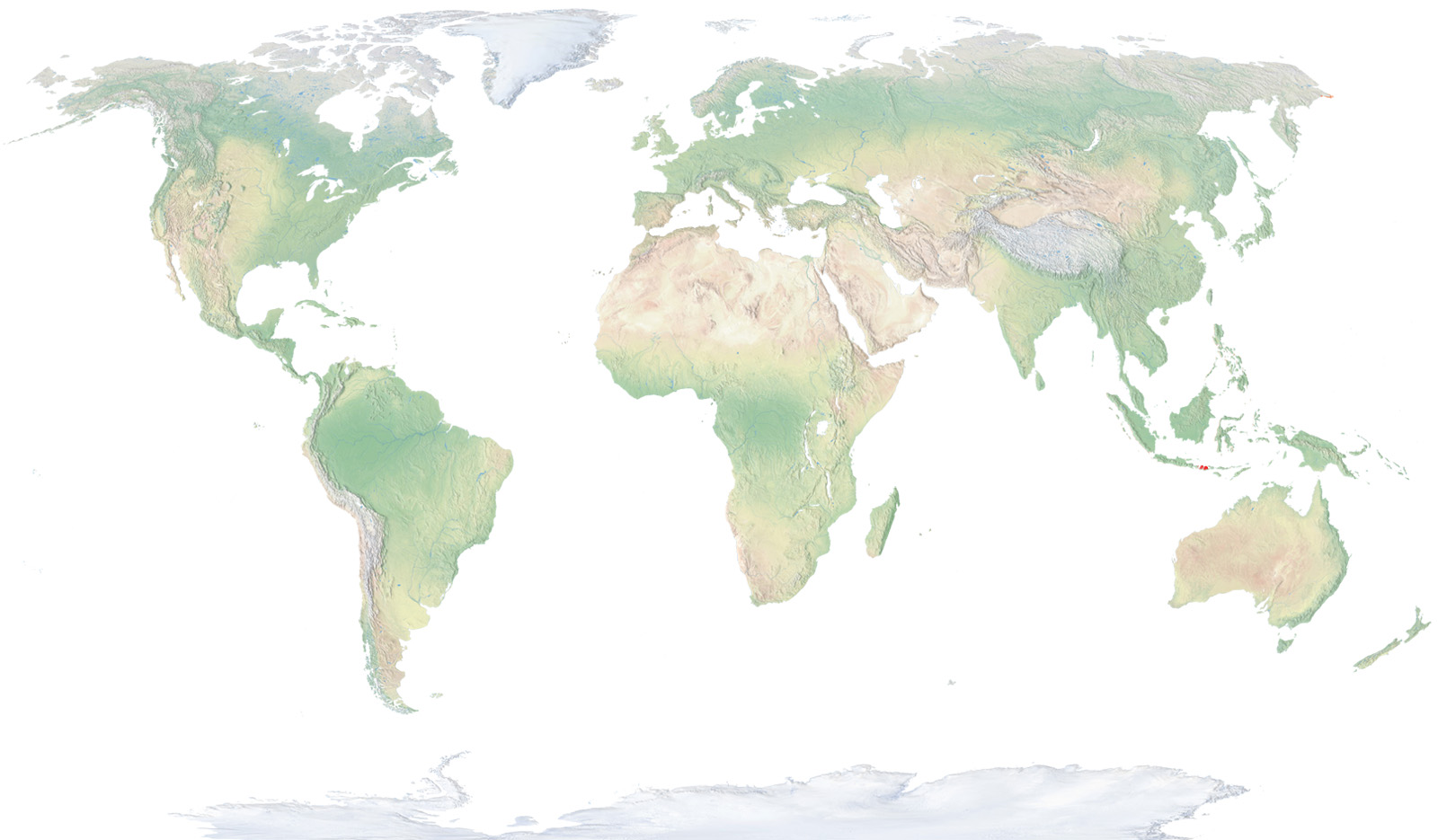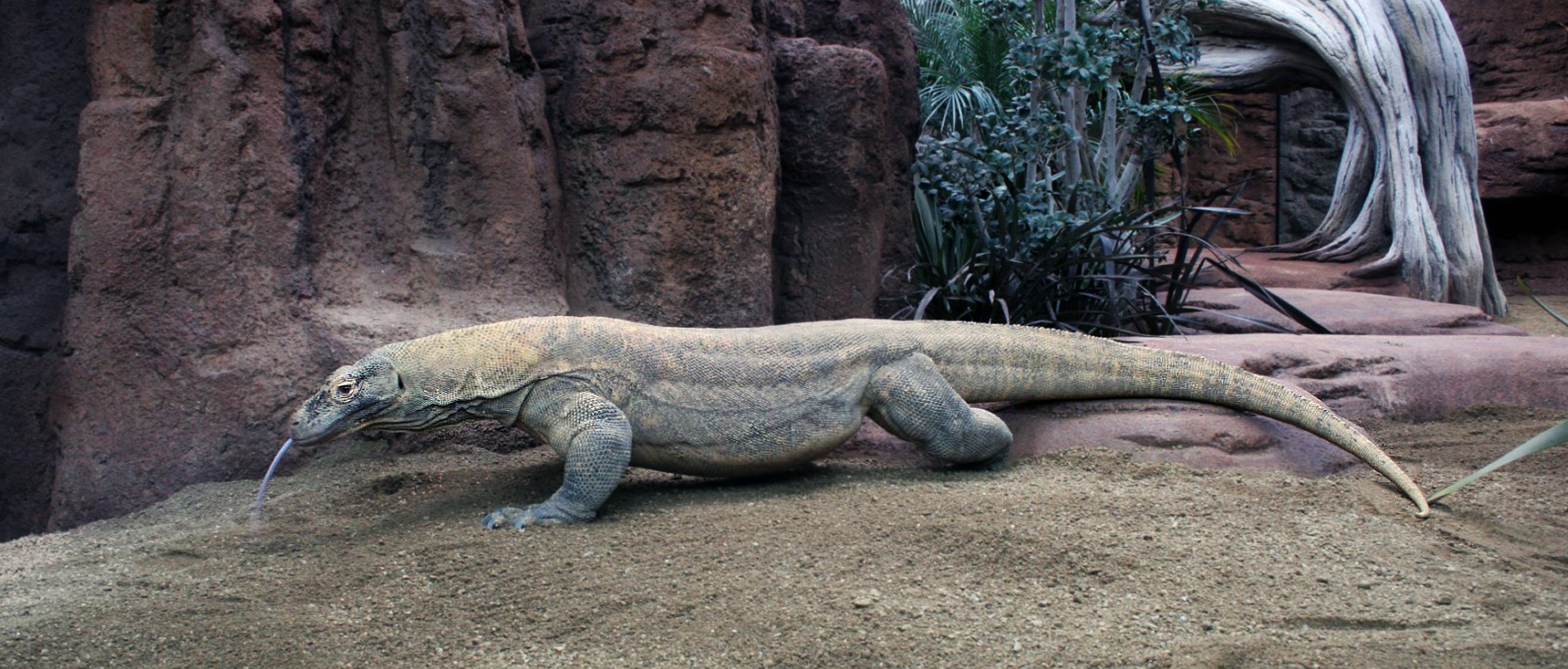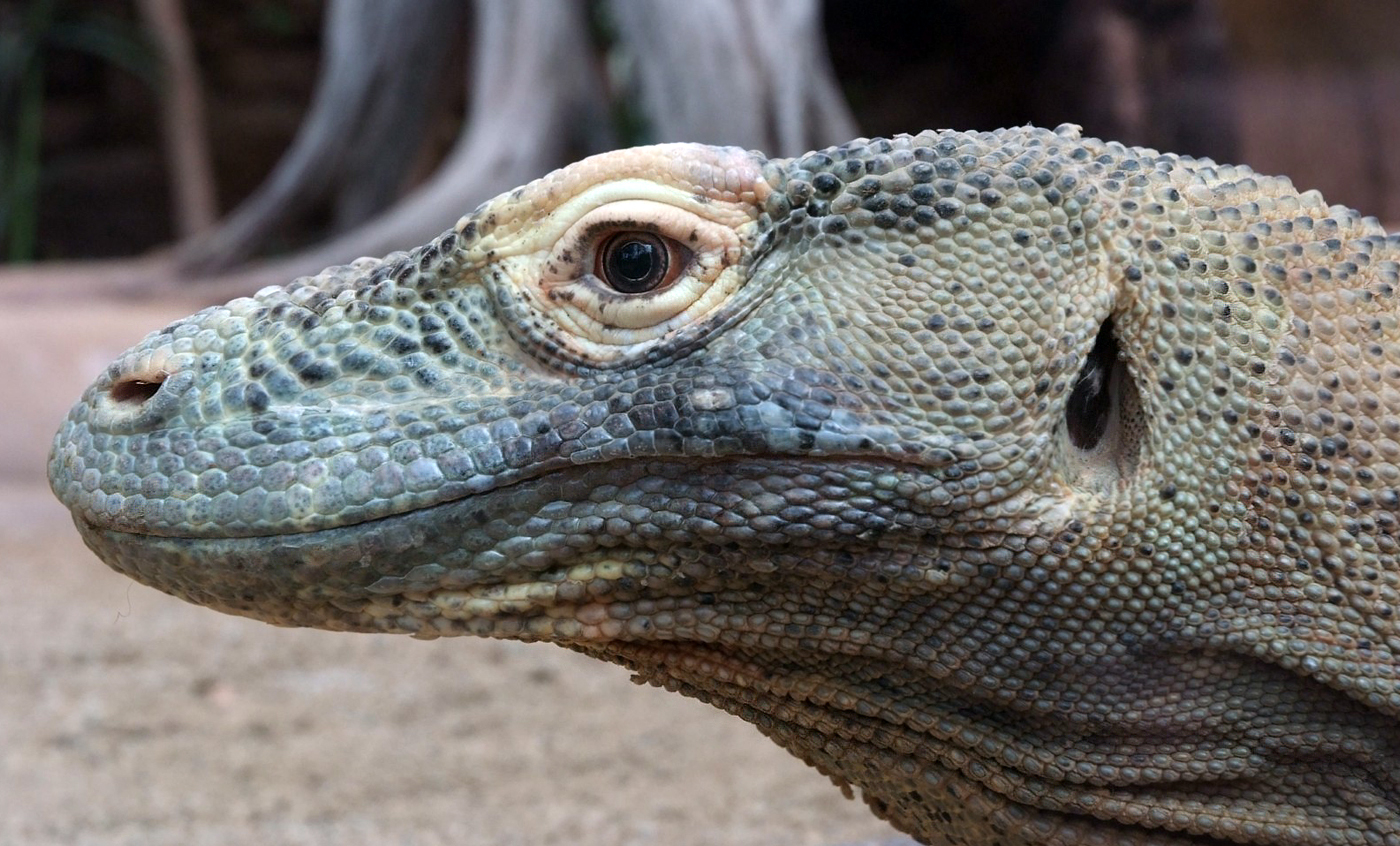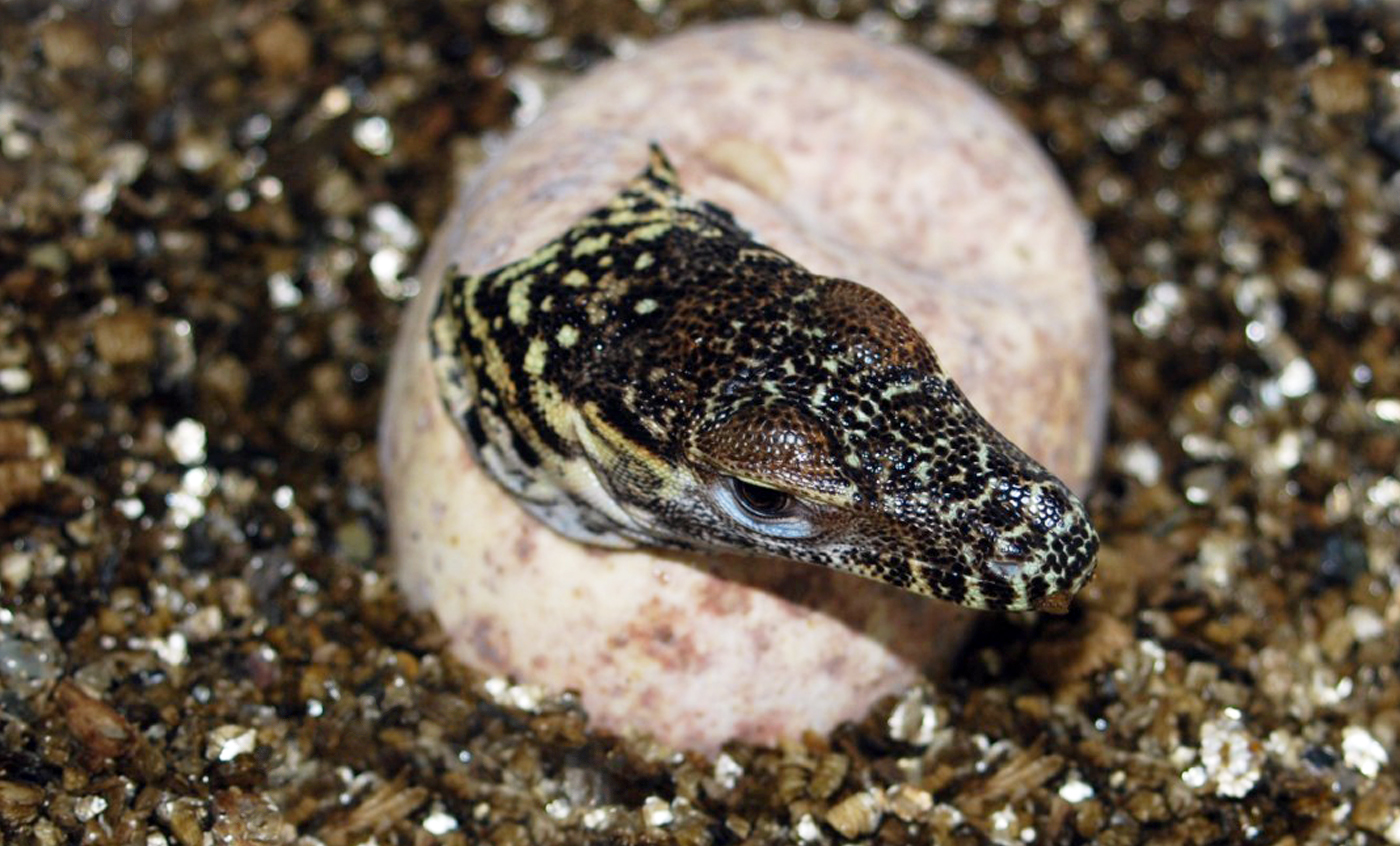Komodo dragon
The Komodo dragon, which can be up to three metres long and weigh over 150 kilograms, is the largest lizard in the world. Its habitat is restricted to the small Indonesian islands of Komodo, Rinca, Flores, Gili Motang and Gili Dasami.
It moves agilely on ground despite its considerable weight (it can run at 20 km/h for short distances), is a very good swimmer and can even travel between nearby islands when sea currents are favourable.
With a carnivorous and carrion-based diet, its saliva is quite toxic. It is the most powerful predator on the islands where it lives, as there are no large hunting mammals like tigers or leopards there.
Breeding program
Natural habit
Its habitat is restricted to the small Indonesian islands of Komodo, Rinca, Flores, Gili Motang and Gili Dasami.
Its natural habitats are flat savannahs and open forest that is found on these volcanic islands, with dry and hot climates, some 750 mm of annual rainfall, concentrated in three or four months, from December to March.

- Distribution / Resident
- Breeding
- Wintering
- Subspecies
Risk level
- Extint
- Extint in the wild
- Critically endangered
- In Danger
- Vulnerable
- Near threatened
- Minor concern
- Insufficient data
- Not evaluated
Taxonomy
Physical characteristics
Biology
Reproduction
Biology
In the wild, an adult Komodo dragon weighs some 70 kilos, although specimens in captivity have weighed over 160 kg. Its length can measure over three metres and its tail is as long as the body, with some 60 serrated and often-replaced teeth, up to 2.5 centimetres long. The tongue and long and yellow, markedly forked. The colouring is grey or brownish, with different green and reddish tones over the whole body.
Its natural habitats are flat savannahs and open forest that is found on these volcanic islands, with dry and hot climates, some 750 mm of annual rainfall, concentrated in three or four months, from December to March.
With a carnivorous and carrion-based diet, it is the most powerful predator on the islands on which it inhabits, as there are no large hunting mammals like tigers or leopards there. As adults, they can capture considerably large prey such as the Rusa deer, water buffalo, goats and wild boar, although they also prey on micromammals, birds, eggs, fish, crabs and even the babies and young of their own species. They hunt by ambush, crushing prey with their powerful jaws. If the victim escapes after attack, it will die within hours due to the infection caused by the more than 50 types of bacteria in their saliva.
Its reproduction is oviparous: after copulation, females lay from 20 to 40 eggs in a nest dug into the ground, where the babies will hatch after seven or eight months. However, it is also one of the few vertebrate species that can reproduce by parthenogenesis, a type of asexual reproduction in which females can produce new specimens without being fertilised by the male.
They are primarily active first thing in the morning and at sunset, avoiding movement at night and during the hottest hours of the day. They have a notorious territorial behaviour, with males defending territories up to 2 km2 in size.
It moves with great agility on land despite its considerable weight (they have been recorded at speeds of up to 20 km/h for short distances), is an extremely good swimmer and can even travel between neighbouring islands when sea currents are favourable. It can also climb trees quite nimbly, particularly young dragons.
The current population of the Komodo dragon is estimated at 5000 to 6000 specimens. Despite more than half of them living in the Komodo National Park, made up of the majority of islands inhabited by this animal, all studies performed in recent decades point to a progressive decrease in their numbers and area of distribution. The reasons for this shrinking are due to humans: destruction of their habitat due to the transformation of natural areas into farmlands, fragmentation of their populations due to the progressive increase of urban hubs, a decrease in their prey due to excess hunting and even the capture of dragons to supply the illegal trafficking of pets.
For some years now in captivity, they have successfully reproduced in different zoos around the world, such as those in Washington, Cincinnati, Honolulu, Miami and Jakarta. In Europe at present breeding has only been successful at the zoos in Prague, London, Chester and Reptilandia, on the island of Gran Canària, as well as at our Zoo, which participates in the EEP for the species, and at which 12 babies were born in 2012 of this endangered giant reptile.





